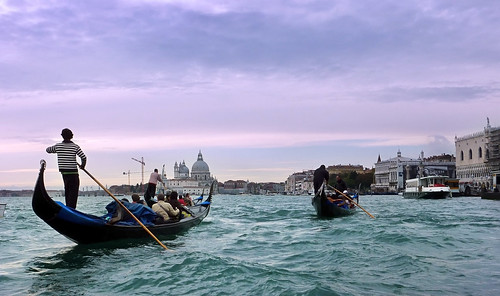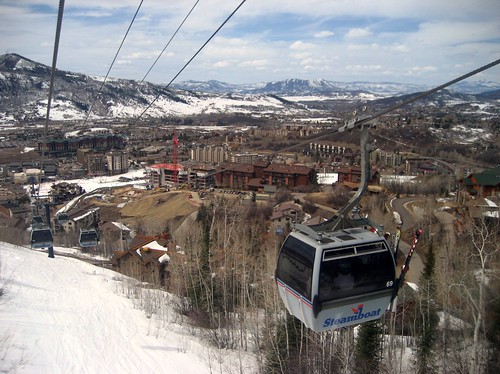. . . after graduating from planning school, I was visiting my partner’s family when plans arose to go hiking around her local ski resort.
Let me make this clear from the beginning: I am no skier. I’ve skied twice in my life with little success and those occurrences were on hills of inconsequential size.
In my humble opinion, nailing oneself to a couple of planks of wood and throwing oneself off of a cliff is not so much sport as it is suicide. If that’s what you’re into, great. I’m happy down here.
As such, I was unprepared for the journey up the 2000 meter high Melchsee Frutt. I was also unprepared for my first gondola trip.
Just to clarify, prior to my experience in Switzerland, my understanding of a gondola was this:
Wrong, I discovered. A gondola was also this:
What kind of bizarre contraption was this gondola I asked myself. Is it safe? How many people can it carry? How fast is it? Is it safe? Really? But it’s just dangling by that cable? Again: Is it safe?
My worries were quickly put to rest. The gondola was fast, comfortable and calm. And if it wasn’t safe, no one seemed to care or notice. I put my faith in the dozens of other Swiss passengers who showed little qualm about the vehicle.
As we ascended the mountain, however, a very curious event occurred. On the ground beneath our car, about 25 feet below us, a pick-up truck whizzed by along a service road. It was at that moment I had a realization:
There is no traffic 25 feet in the air!
After the hike I was curious: Could this gondola technology be used in an urban environment?
I understood how ridiculous the idea was, so I secretly scrambled to uncover as much research as I could without anyone knowing.
Nevertheless, after a few weeks of digging, I’d uncovered enough research to suggest something I thought to be profound: Gondola (later to be known as Cable-Propelled Transit) technology was not only an attractive option for urban environments, in many ways it was superior to our traditional family of transit technologies.
That experience, just over two years ago, sent me off on a bizarre hunt for information about what must be one of the most misunderstood and most underestimated transit technologies in history. Sometimes the quest was borderline quixotic but it has always been exhilarating.
The Gondola Project is the culmination of that work.
Creative Commons images by bratha and ben.ramirez.



5 Comments
Steven,
What an admirable project you have begun. There are others whose thoughts converge with yours, for example the famous computer sceintist, John Mcarthy, has advocated aerial ropeways for urban transit. There is even potential for novel gondola tech to range freely over large areas serve any given address pick place by, say, three spread winches set on towers or promontories.
My particular intererest in aerial ropeway tech for wind energy; the potential to reach excellent gap winds far higher than wind towers can reach with gondolas that are turbine generators or wings driving bull wheel generators. Steel rope is potentially a far cheaper more effective basis than towers, where terrain allows. I am actively designing building working scale prototypes.
Your site is a most valuable resource will surely lead to great things,
dave santos
Thanks so much for the support and kind words, Santos. All the best in your own endeavors.
I promote Urban Ropeway as a strategic integrated solution.
From 2003, first in Rome, now around all Mediterranean Coastal Cities.
Now we are promoting Energy & Food RoofTopFarms integrated with Urban Ropeways for the Agri-Urban Revolution …
If you want we can associate your LOGO Creative Urban Project in our web-site (WWW.Funivia-Roma.it) Urban Reverse Engineering – Flying Cars for Rome.
See also :
“AMOROMA 02020” on FaceBook …
and a short concept story
http://www.youtube.com/watch?v=c8D0bIzHjdw
Many thanks
Stefano Panunzi
Professor of Urban and Architectural Design – University of Molise – Italy
Regina, SK, is a prime candidate for this type of project. First city I have lived in where you have to stop for a train going thru the middle of the city!!
In what way? I’m afraid to admit I’ve never been to Regina. What makes it a prime candidate?